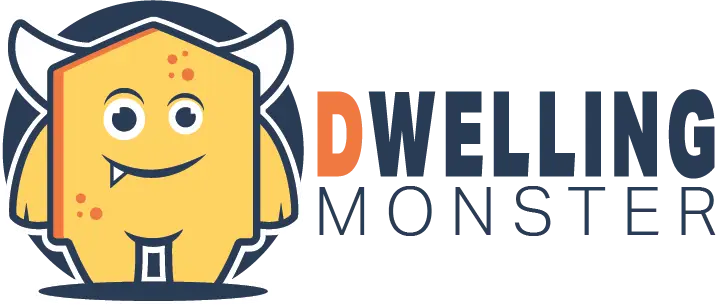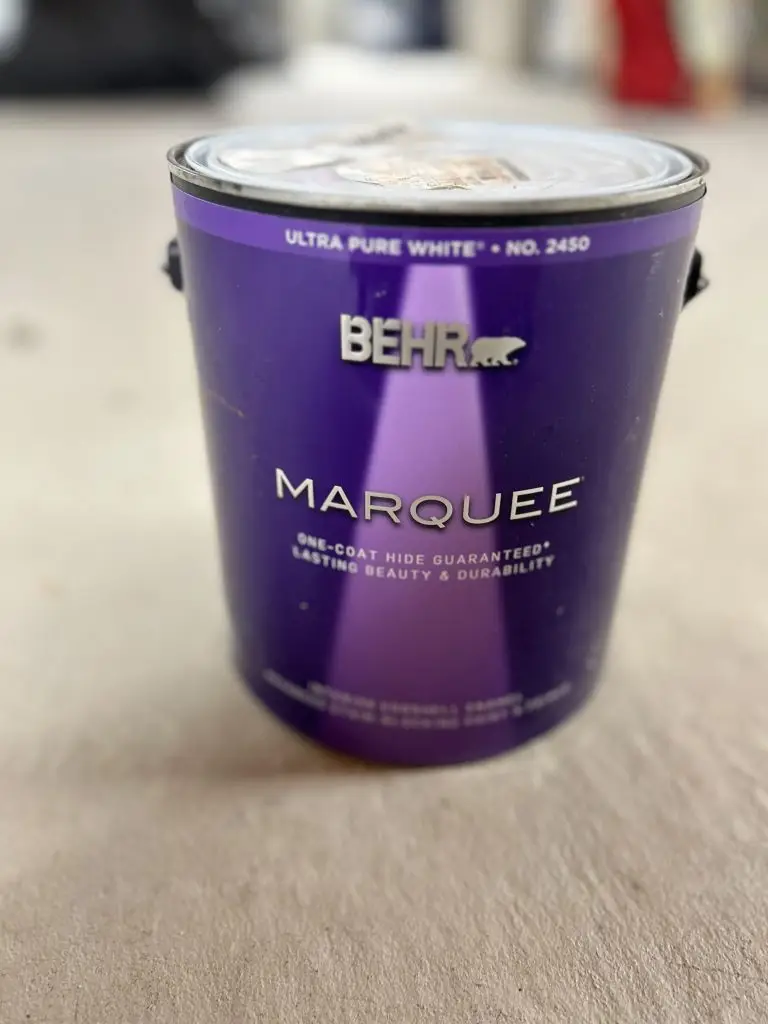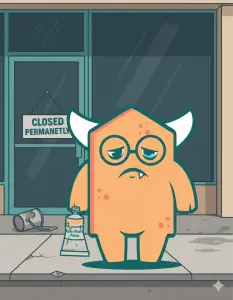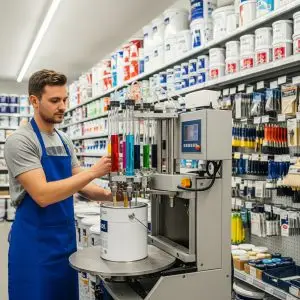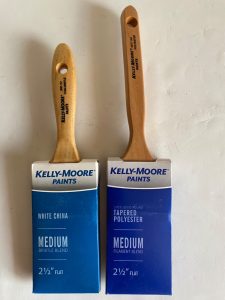Let’s be real – if you shop for paint at Home Depot (and most of us do because they’re everywhere and actually open when we need them), you’re dealing with Behr paint. And while the paint snobs might turn their noses up at “big box store paint,” Behr has actually developed one of the most sophisticated color formulation systems in the industry.
I’ll admit, when I first started trying to understand Behr labels, I was completely overwhelmed by their 384-drop system. It seemed like unnecessary complexity compared to other brands. But once I figured it out, I realized it’s actually genius – it gives them incredible precision for color matching, which explains why they can offer such a massive color selection.
Whether you’re trying to match an existing Behr color, convert from another brand, or just want to understand what you’re buying, this guide will walk you through everything you need to know about Behr’s labeling system.
Understanding Your Behr Label Layout
Behr labels have evolved over the years, but they’ve always prioritized giving you the key information upfront. The layout is clean and straightforward, which I appreciate when I’m standing in the paint aisle trying to figure out what I’m looking at.
At the top of the label, you’ll see the brand designation (BEHR) followed by the quality line. This isn’t just marketing fluff – it actually matters for performance and how colorants interact with the base:
- Ultra: Their premium line with advanced stain-blocking
- Premium Plus: Mid-tier with good coverage and durability
- Marquee: Top-of-the-line with one-coat coverage claims
- Dynasty: Their exterior premium line
Below that, you’ll see the product specifications: Interior/Exterior designation and finish type (Flat, Satin, Semi-gloss, etc.).
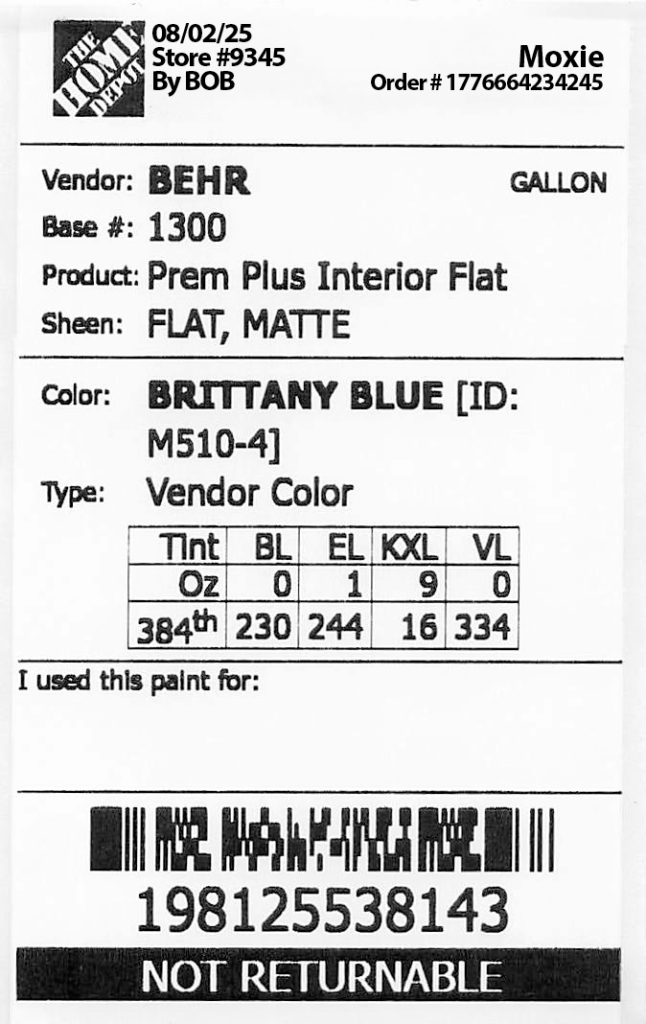
Decoding Behr’s Base Code System
Here’s where Behr gets interesting. Instead of descriptive names for their tint bases, they use a numerical system that’s actually quite logical once you understand it.
Behr uses base codes that indicate how much white pigment is in the foundation paint and what intensity of colors it can accommodate:
| Base Code | Base Type | Best For |
|---|---|---|
| 1 | Ultra White Base | Very light tints and pastels |
| 2 | White Base | Light colors |
| 3 | Light Base | Medium-light colors |
| 4 | Medium Base | Mid-tone colors |
| 5 | Accent Base | Darker colors |
| 6 | Deep Base | Very dark and saturated colors |
The higher the base number, the less white pigment is in the foundation, which means it can accommodate more colorant for darker colors. Understanding this is crucial because you cannot take a formula designed for base 6 and apply it to base 2 – the chemistry just doesn’t work that way.
Understanding Behr’s Custom Color System
When you have a custom color matched at Home Depot, Behr uses a simple designation system:
CM: Stands for “Color Match” – this tells you it’s a custom formula, not a standard Behr color from their collection.
Below that, you’ll see the custom name. Here’s something I learned the hard way: you can change this name to whatever you want. So “Living Room Green” might be your description, not an official color name. Always rely on the formula, not the name.
The date/time stamp shows when your paint was mixed. This is more important than you might think, because Behr occasionally updates their formulations, and if you need to recreate this exact color years later, knowing when it was originally mixed helps tremendously.
Mastering Behr’s 384-Drop Formula System
This is where Behr really sets themselves apart. Their 384-drop system initially looks intimidating, but it’s actually the most precise system I’ve encountered in consumer paint.
The format looks like this:

This means:
- AXL (Permanent Yellow): 0 ounces + 62 drops
- CL (Yellow Oxide): 0 ounces + 18 drops
- LL (Raw Umber): 0 ounces + 6 drops
Behr’s Mathematical Precision:
- 384 drops = 1 ounce
- 1 drop = 0.077 ml
- Smallest increment = 1 drop
This ultra-fine precision is why Behr can create incredibly accurate color matches and offer such an extensive color palette.
Complete Behr Colorant Code Reference
Understanding Behr’s colorant codes is essential for anyone working with their paint. Here’s the complete reference:
Standard Colorants:
| Code | Color Name | Description |
|---|---|---|
| AXL | Permanent Yellow | Bright, clean yellow |
| BL | Black | Pure black colorant |
| CL | Yellow Oxide | Earth-tone yellow |
| DL | Phthalo Green | Intense blue-green |
| EL | Phthalo Blue | Deep, intense blue |
| FL | Red Iron Oxide | Earth-tone red |
| IL | Brown Iron Oxide | Natural brown |
| JL | Carbazole Purple | Deep purple |
| KXL | White | White colorant for adjustments |
| LL | Raw Umber | Natural dark brown |
| RL | Permanent Red | Clean, bright red |
| TL | Medium Yellow | Mid-tone yellow |
| VL | Magenta | Pink-red for color mixing |
High-Hide Variants:
Some colorants have “U” versions (like RUL for Red High-Hide, VUL for Magenta High-Hide). These are more intense versions that provide better coverage and color saturation, especially important when you’re trying to achieve deep colors or cover existing dark colors.
Converting Behr Formulas to Other Brands
Since Behr uses the most complex drop system, conversions require dividing their numbers down:
Converting FROM Behr:
To Kelly-Moore: Divide drops by 8 (384-drop to 48-drop system)
- Example: 62 drops ÷ 8 = 7.75 drops (round to 7.5 or 8 drops)
To Sherwin-Williams: Divide drops by 12 (384-drop to 32-drop system)
- Example: 62 drops ÷ 12 = 5.17 drops (convert to fractional ounces)
Converting TO Behr:
From Kelly-Moore: Multiply drops by 8
From Sherwin-Williams: Multiply drops by 12
Base Conversion Guide:
| Behr Base | Kelly-Moore Equivalent | Sherwin-Williams Equivalent |
|---|---|---|
| Base 1-2 | Light Base (111) | Extra White |
| Base 3-4 | Medium Base (222) | Accent Base |
| Base 5-6 | Deep Base (444) | Deep Base |
Pro Tips for Working with Behr Paint
The Sample Size Challenge: Behr’s 8-ounce samples can sometimes skip colorants entirely if the amounts are too small for their dispensing equipment to measure accurately. If your sample doesn’t match the color chip perfectly, this might be why.
Quality Line Matters: Behr Ultra behaves differently from Behr Premium Plus, even with identical formulas. The premium lines have different base chemistry that can affect how colorants blend and appear.
Base Selection is Critical: Never assume you can substitute one base for another. A formula designed for Base 6 (deep base) simply won’t work in Base 2 (white base), even if you adjust the colorant amounts.
The “No-Prime” Factor: Many Behr paints are marketed as “paint and primer in one.” These have different base formulations that can make color matching more challenging if you’re trying to convert to or from traditional paints.
Age and Reformulation: Behr continuously improves their formulations. A formula from 2020 might not produce exactly the same color with 2024 paint, even if you follow the numbers precisely.
Maximizing Your Behr Experience
Keep Detailed Records: Behr’s 384-drop system creates incredibly specific formulas. Keep your paint can labels – they’re like recipes that can be scaled up or down mathematically. Best move is to store these in dwellingmonster.com
Understand the Precision Advantage: While Behr’s system seems complex, that complexity allows for incredibly fine color adjustments. If you need a color to be “just a touch warmer,” Behr can add literally a few drops of yellow oxide to achieve that.
Work with the System: Don’t fight Behr’s 384-drop system – embrace it. When you need touch-ups, you can confidently ask for exactly what’s on your label, knowing it will be mathematically precise.
Cross-Brand Reality Check: When converting Behr formulas to other brands, remember that perfect matches are rare. Behr’s base chemistry and colorant selection is different from everyone else’s. But understanding their system gets you remarkably close.
The bottom line is this: Behr’s 384-drop system might seem like overkill, but it’s actually a testament to their commitment to color accuracy. Once you understand how to read their labels, you have access to one of the most precise color formulation systems available to consumers. And given that Home Depot stores are everywhere and usually open when you need them, that’s pretty powerful knowledge to have in your back pocket.
